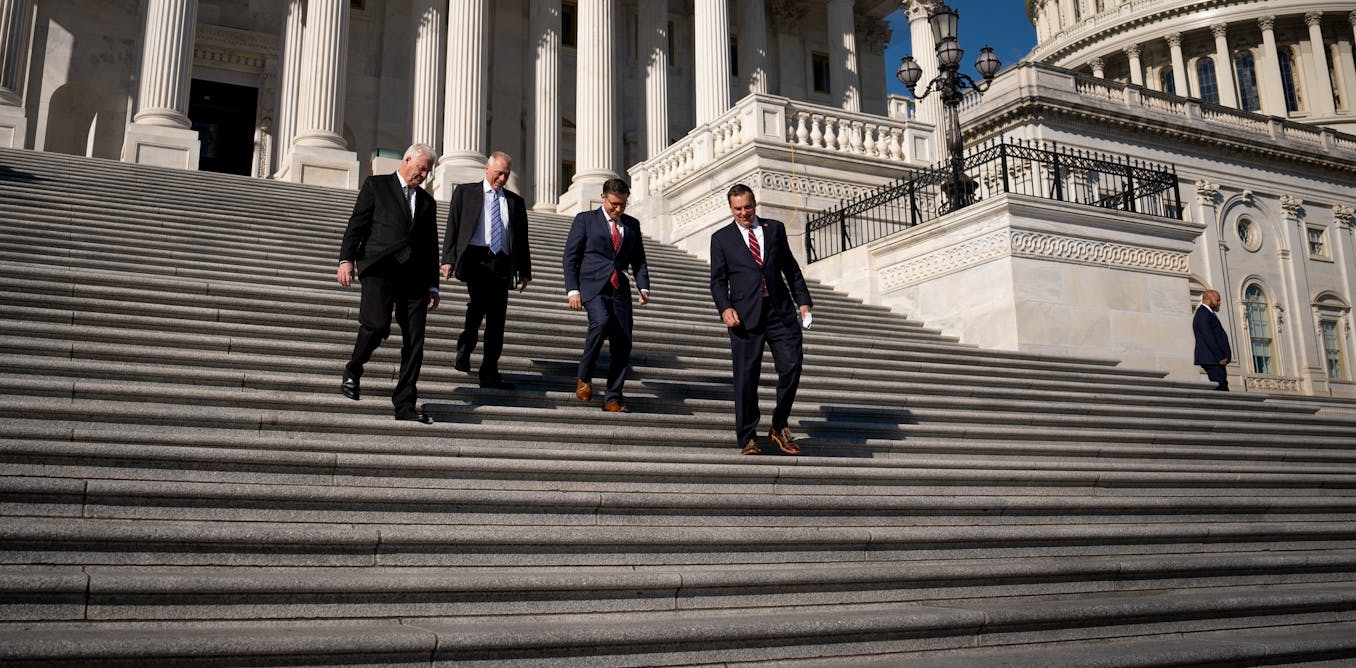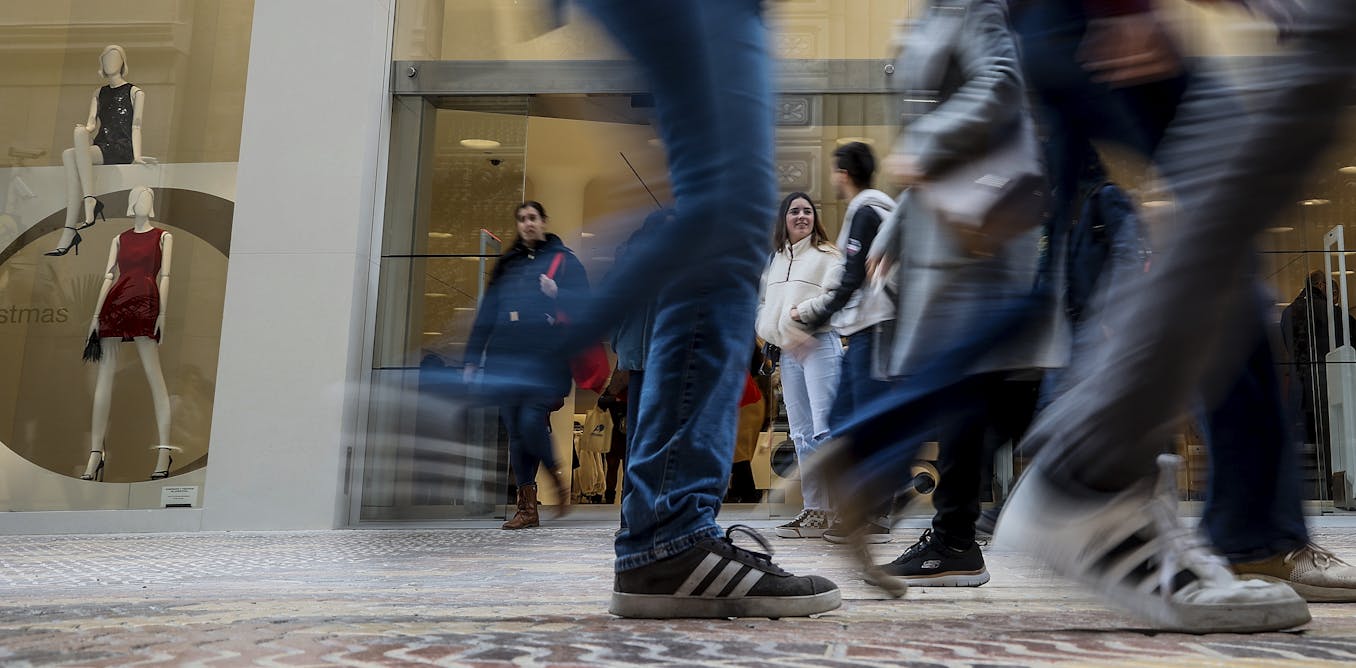Business
Why Your Pharmacy Experience Is Miserable
If you’ve been to a pharmacy to pick up a prescription lately, you might have wanted to bang your head against the wall.
Chains and independent pharmacies alike are short-staffed, leading to long lines and frustrating experiences. Customers are finding empty shelves and chaotic operations. Satisfaction with brick-and-mortar pharmacies dropped 10 points in 2024 alone, according to a study by J.D. Power.
Running the businesses is getting harder, too. “Without a doubt, this is the worst it’s ever been,” says Enrique Reynoso, who has been a pharmacist since 1991 and owns Beacon Wellness Pharmacy, a small shop in upstate New York. Reynoso has tried to do everything he can to stay afloat—putting drugs in smaller bottles to save costs, asking customers to pay by Venmo since credit-card fees are so high, diversifying the merchandise he sells in the front of his stores. Still, drug prices are high—an Adderall shortage, for example, drove the price from $25 to $400, even though insurers’ reimbursement hasn’t changed—and he loses money on some popular drugs.
It’s no easier for the big chains. Across the street from Reynoso’s store is a Rite Aid with rows of empty shelves, where customers wait in a line seven deep at the pharmacy. (Rite Aid said on Sept. 3 that it had emerged from bankruptcy protection after closing about a quarter of its stores.) CVS closed 900 stores over three years, citing changes in consumer buying patterns, while Walgreens is planning to close about a quarter of its 8,600 stores because “the current pharmacy model is not sustainable,” CEO Tim Wentworth said in a June earnings call. Chain stores also say they’ve been plagued by shoplifting, which has motivated them to lock up many products behind plastic shields, a practice that has backfired by driving away even more customers.
Read More: Why Americans Are Cooking More At Home.
Pharmacies are struggling partly because of changes to consumer behavior. After the pandemic drove more shoppers online, customers bought less and less from brick-and-mortar stores like pharmacies. Although in-person shopping has resumed in many other types of stores, pharmacies have not seen the same boost, says Brittain Ladd, a retail and logistics analyst. “Even if they come in to have a prescription filled, consumers are rarely buying anything in the store because they know they can buy it cheaper online,” he says. Pharmacies have reacted by cutting prices, which then puts them even more in the red, Ladd says. This then leads to more cost cutting.
As they struggle with expenses, pharmacies are cutting staff. One pharmacist at a Walgreens in Wisconsin, who asked that her name be withheld to protect her job security, says when she started 15 years ago, her department had four pharmacists working. Now it sometimes subsists on half that, despite expectations to process even more prescriptions and immunizations than before. The stress has driven some pharmacists out of the profession, ratcheting up turnover levels even further. “The patients are frustrated, we’re frustrated—they wait longer in line and they’re waited-on by someone who is brand new,” the pharmacist says.
Larretta Dickerson has worked for CVS, Walgreens, and Rite Aid stores in North Carolina and South Carolina. She says all three companies were plagued by staff shortages, especially of technicians, who are lower on the rung than pharmacists. When technicians called out, pharmacists did the work of three people, Dickerson says. “No one recognizes the level of stress they’re putting you under,” she adds. “You’re filling a prescription and the phone is ringing, saying, ‘One pharmacy call, two pharmacy calls, three pharmacy calls.’ I would stand there and feel the sweat come up the back of my neck.”
But there’s a bigger and more complicated reason that pharmacies are struggling right now. It has to do with how pharmacies are compensated for the medications they dispense. Most patients are covered by insurance, and insurers use companies called Pharmacy Benefit Managers, or PBMs, to manage their prescription drug benefits. PBMs are essentially middlemen, but they have a huge amount of power because they determine how much pharmacies get compensated for each drug they dispense. Every year, pharmacists say, PBMs are offering less and less to pharmacies for the drugs they sell, sometimes forcing them to operate at a loss on popular drugs like Ozempic.
Read More: What's Changing For Home Buyers.
PBMs can do this because the three largest—CVS Caremark, Express Scripts, and Optum Rx—control about 80% of the market. The six largest PBMs control about 90% of the market. PBMs use their market share “to enact anticomPetitive practices and protect their bottom line,” according to a recent report from the House Committee on Oversight and Accountability. For example, the committee found, pricing models are so opaque that PBMs have overcharged insurance plans and taxpayers by hundreds of millions of dollars.
The staff of the Federal Trade Commission also released a report on PBMs in July 2024, arguing that consolidation in the industry has allowed PBMs to “exercise vast control over huge swaths of the Healthcare sector.” Since PBMs own their own specialty pharmacies, they’ll sometimes steer patients towards their own mail-order pharmacies rather than brick-and-mortar ones, the report alleges. Many PBMs are also part of giant Healthcare conglomerates that include Health insurers and pharmacies, leading critics to question whether they really have the incentive to negotiate for the best prices. (On Sept. 17, Express Scripts sued the FTC, saying the report made “false and biased claims about the PBM industry” and failed to take into account the value that PBMs deliver. PBMs, Express Scripts said in a news release, lower the cost of medications for customers and for employers.)
Asked for comment by TIME, Express Scripts pointed to the claims made in its lawsuit. CVS Caremark said it protects Businesses and patients from price gouging, and that policy limiting PBM negotiating tools would "serve as a handout to the pharmaceutical company." Other leading PBMs did not respond to TIME's request for comment.
PBMs can be especially difficult for small, independent pharmacies like the one run by Enrique Reynoso. Big chains have a little more negotiating power with PBMs because they have so many stores. Small, independent pharmacies have almost no negotiating power, according to. Reynoso, who says he is constantly puzzled by the amount he gets compensated for filling prescriptions, and the amount it’s sometimes less than he pays for the drugs and the labor. “They have us over a barrel,” he says. “We can’t say no.”
Independent and chain pharmacies are struggling as a result, says Douglas Hoey, CEO of the National Community Pharmacists Association. Pharmacies enter into contracts with PBMs, but they’re extremely one-sided, Hoey says. If a pharmacy doesn’t like the prices a PBM offers, they can say no to the contract—but then they’ll likely lose the business, which means they won’t be able to offer prescription drug benefits to patients with certain insurance. As PBMs have come under the microscope from congressional overseers and the FTC, “they’ve doubled down on their behavior,” Hoey says, “becoming even more aggressive in their payment contracts with pharmacies, and frankly, the bullying tactics they use in their contracting and business practices.”
The loss of independent pharmacies in particular has created pharmacy deserts where access to prescriptions is difficult. Between 2013 and 2022, about 10% of independent pharmacies in rural areas shuttered, according to Hoey. “We’re at a tipping point,” he says, “where pharmacies are bending, bending, bending until they break.” One 2024 study found that 15.8 million Americans now live in pharmacy deserts, and that those communities have a high proportion of people with a high-school Education or less and who have no Health insurance.
But the shifting economics of pharmacies affects everybody. As pharmacies close their doors, those that remain open see more and more patients—with the same amount of staff and resources, or perhaps even less. The bad news for beleaguered customers is that those long lines and empty shelves may not be going away anytime soon.
-

 Business1d ago
Business1d agoUS House passes measure that could punish nonprofits Treasury Department decides are ‘terrorist’
-

 Business1d ago
Business1d agoFast fashion may seem cheap, but it’s taking a costly toll on the planet − and on millions of young customers
-

 Business2d ago
Business2d agoNew Information: These HV Big Lots Are Now Staying Open
-

 Business2d ago
Business2d agoBrush Fire Rages On Near Butternut In Great Barrington, MA
-

 Business4d ago
Business4d agoCarbon offsets can help bring energy efficiency to low-income Americans − our Nashville data shows it could be a win for everyone
-

 Business4d ago
Business4d agoWorkplace diversity training programs are everywhere, but their effectiveness varies widely
-

 Business4d ago
Business4d agoFirm bosses urged to make use of Welsh language to revitalise rural economic system
-

 Business5d ago
Business5d agoDonor-advised funds are drawing a lot of assets besides cash – taking a bigger bite out of tax revenue than other kinds of charitable giving



























